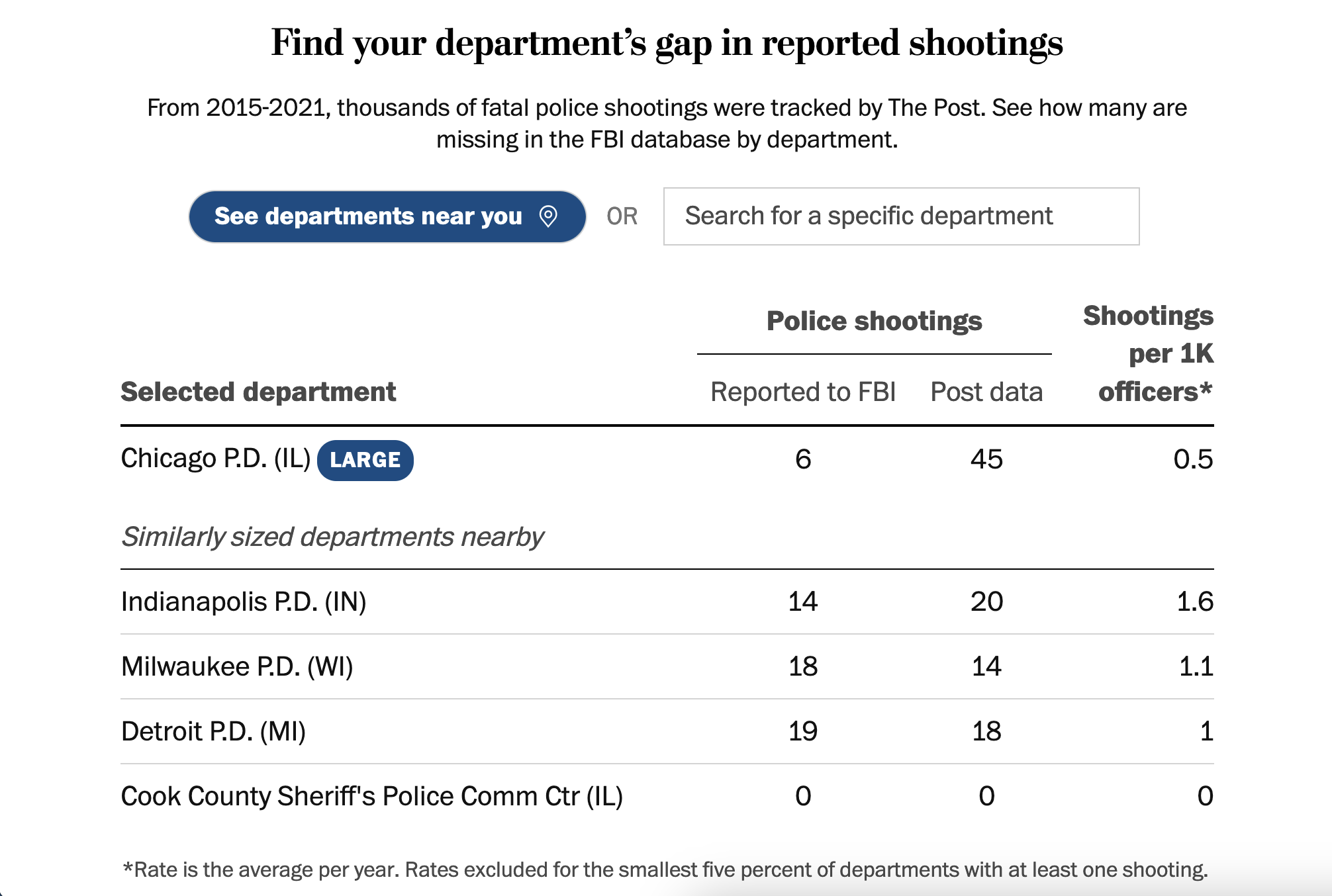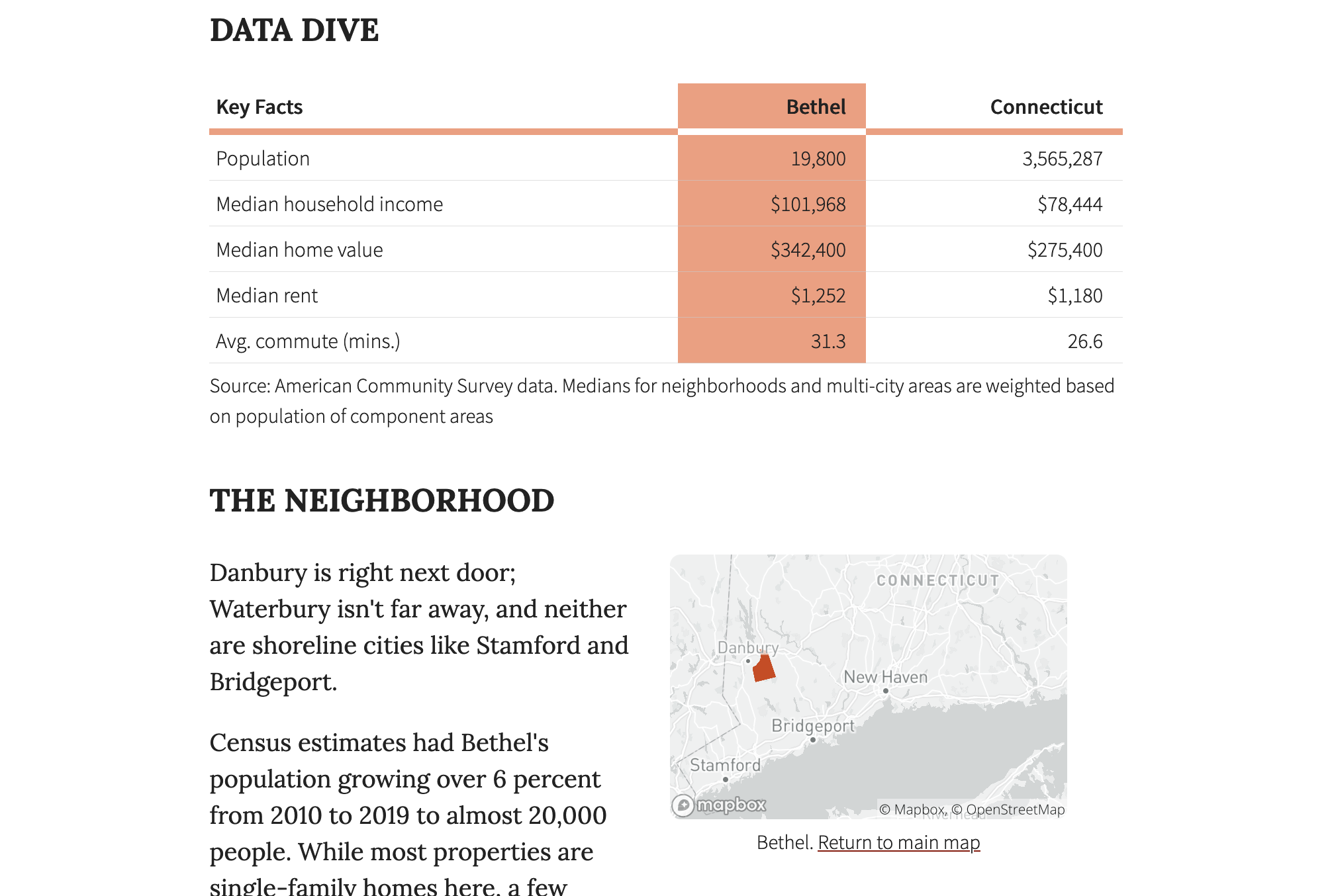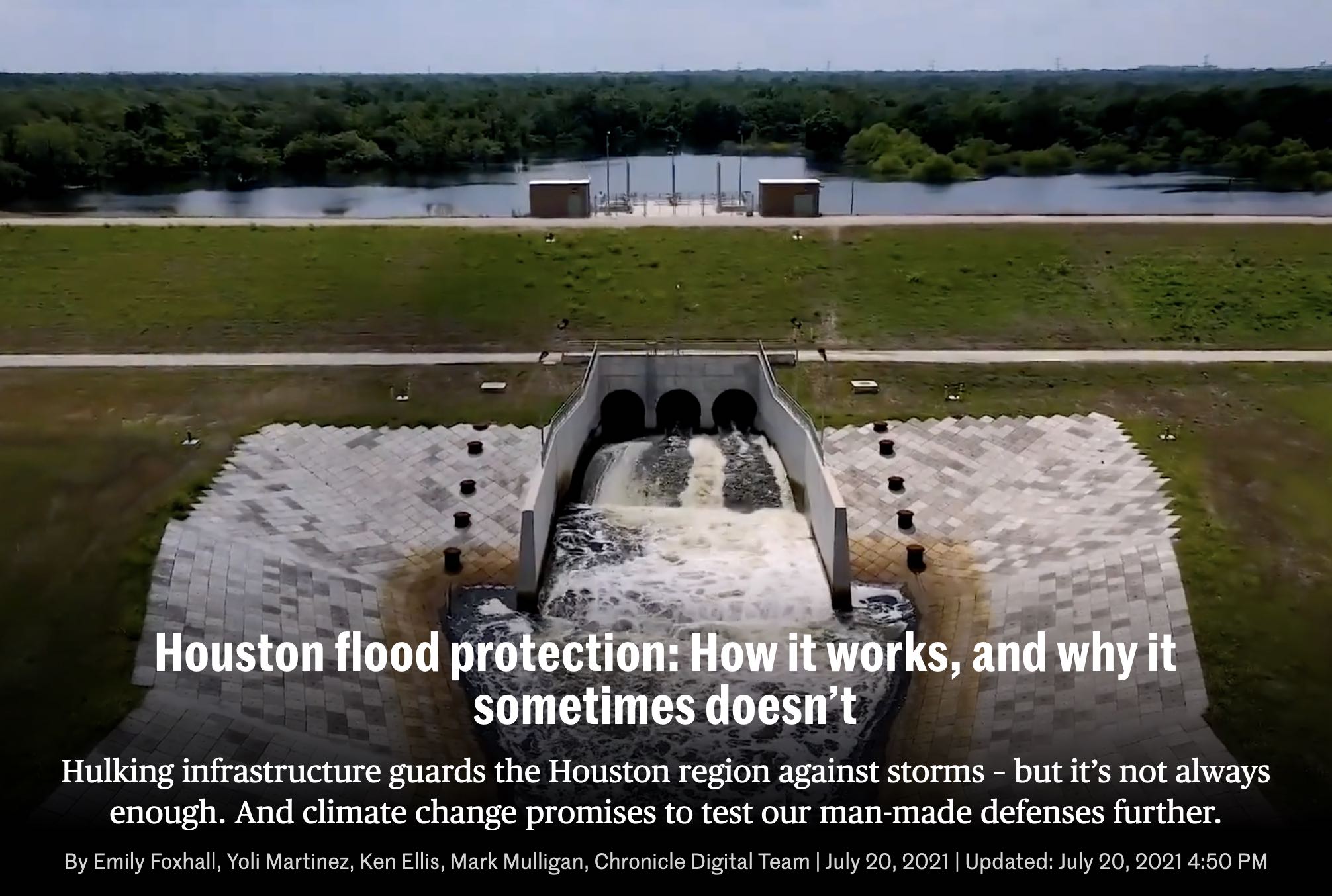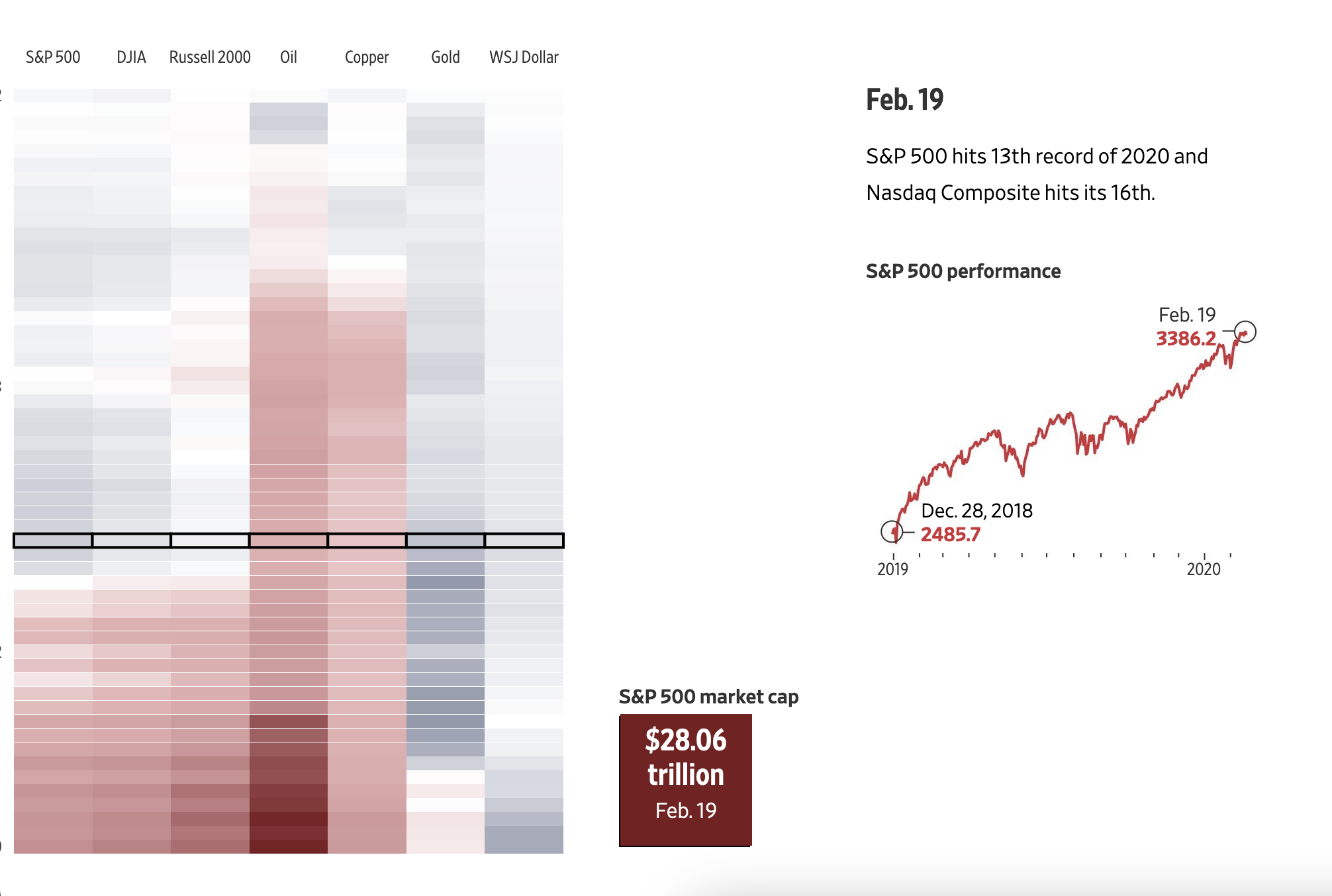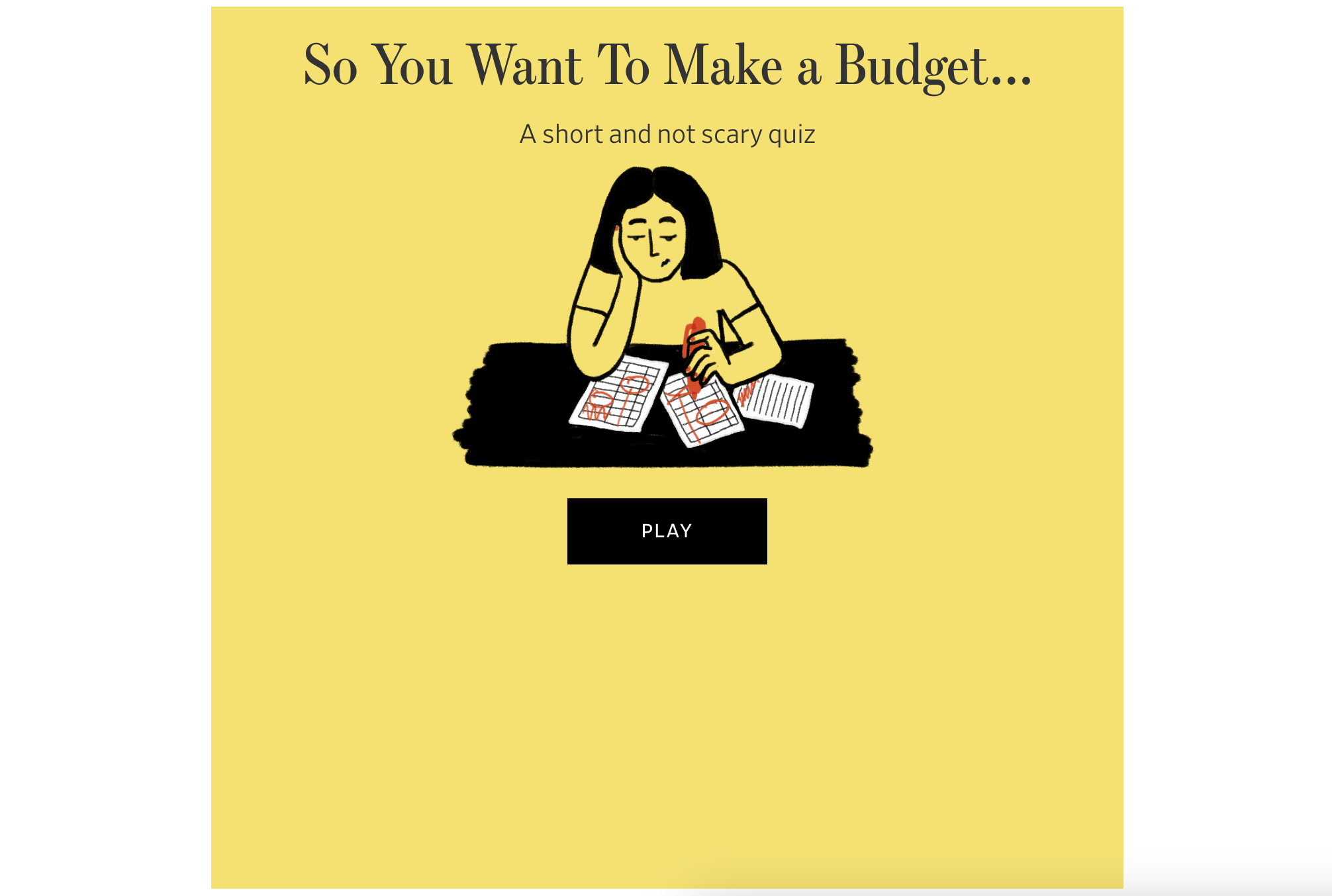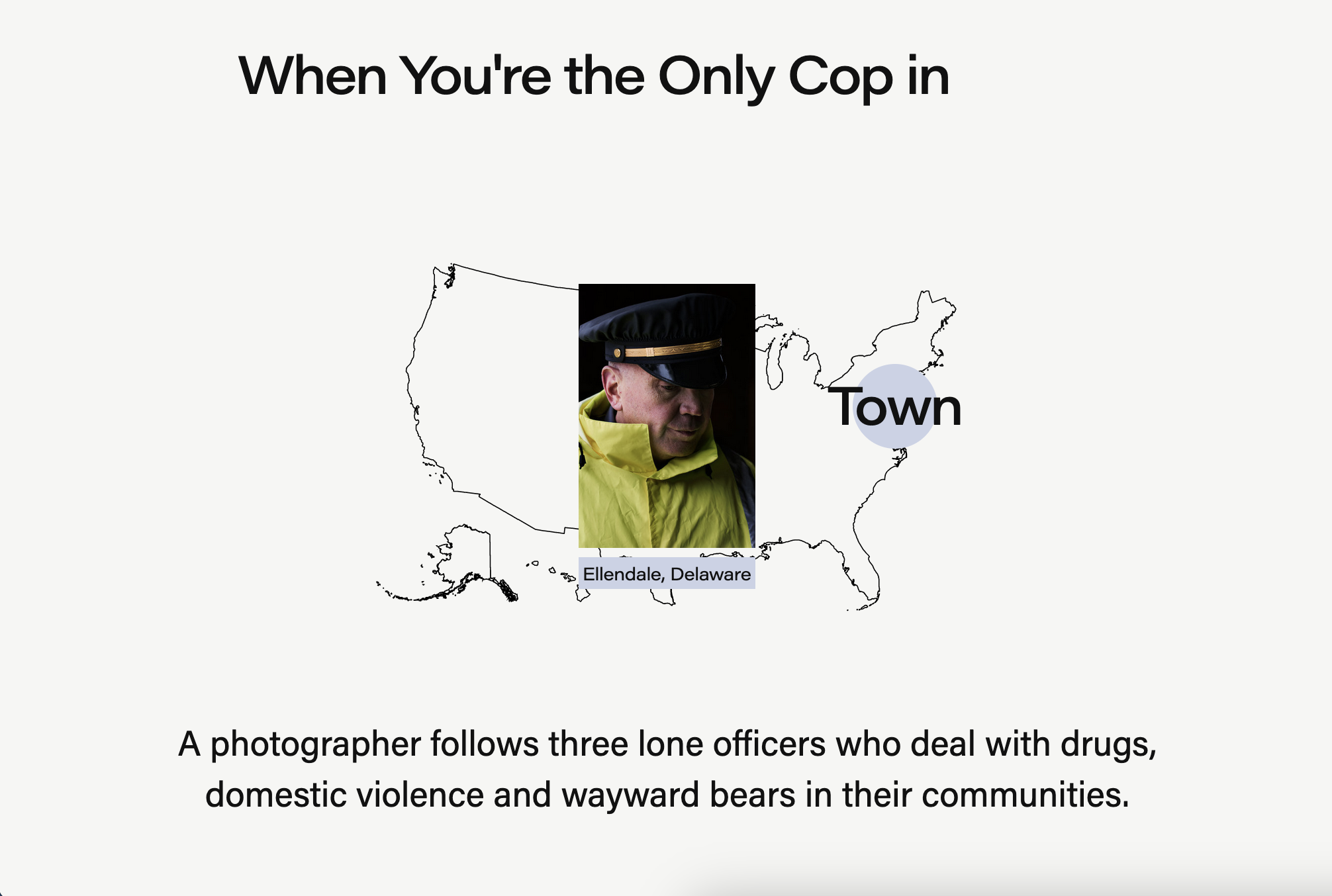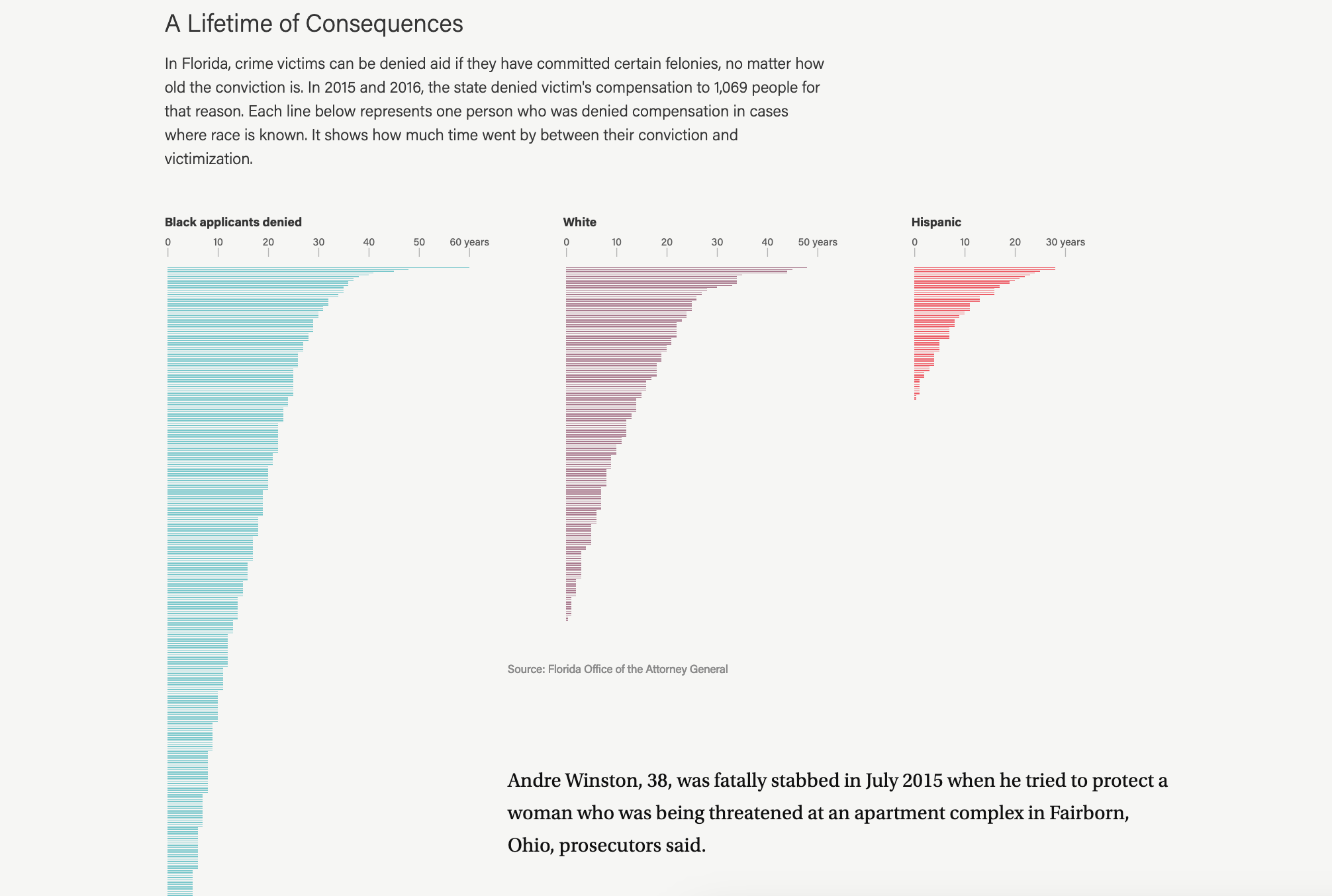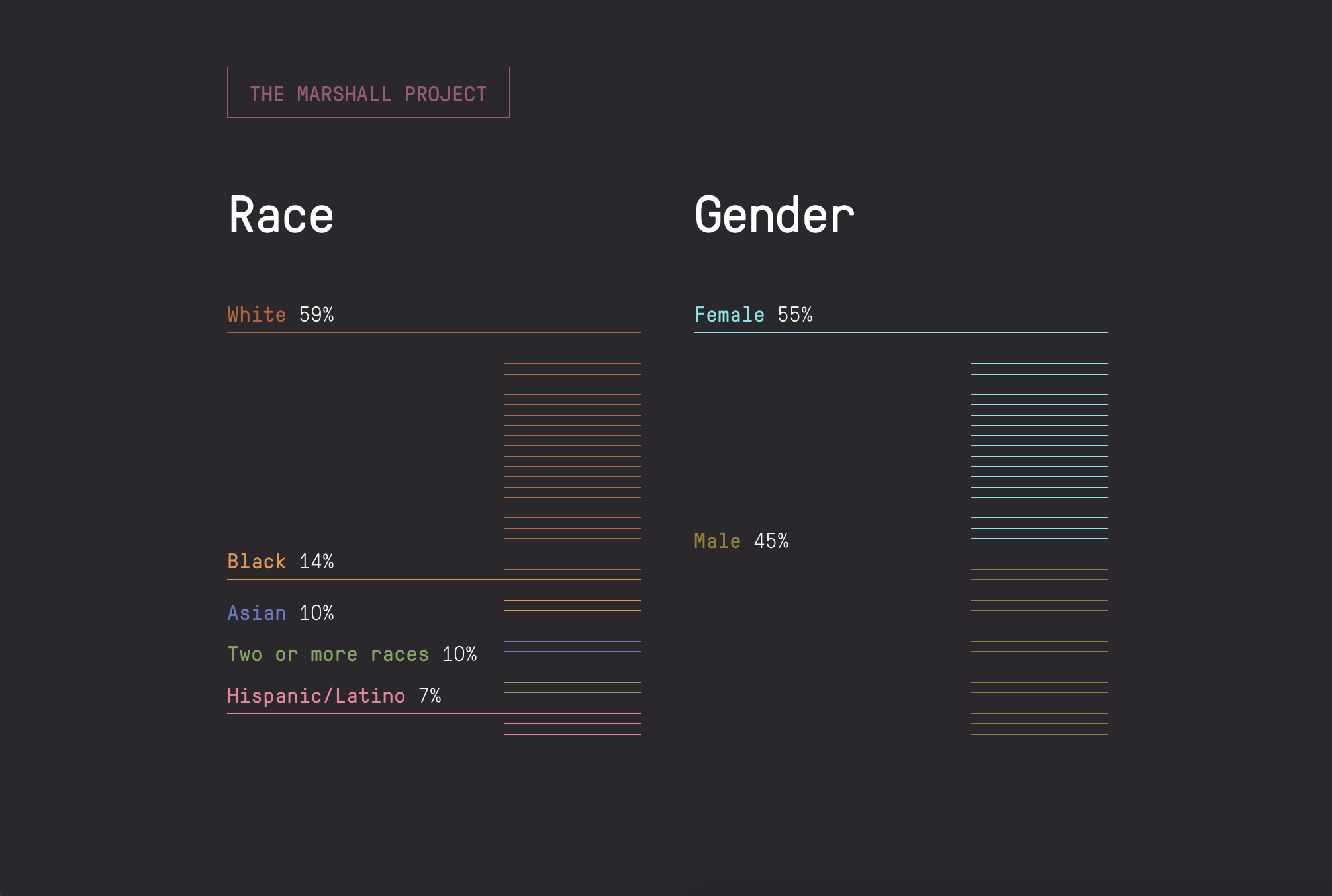Yoli
Martinez
Frontend and Data Visualization Engineer
Hi, I'm an engineer with experience buildling resilient tools and projects for newsrooms. I have a dual background as a data/graphics reporter (The Marshall Project, Wall Street Journal) and newsroom engineer (Hearst Newspapers, The Washington Post), which means my super power is being able to communicate across teams, from technical experts to beat reporters.
Let's chat!
I'm available for contract and project-based work. Reach out and let's talk about design and development for your investigations, newsroom tools or other frontend needs:
Other work I'm proud of:
Lecturer
For three years I co-taught an intro to coding class at the UC Berkeley Graduate School of Journalism. Over a 16-week course, students learned about accessibility, design, HTML, CSS and JavaScript. It's one of the most fulfilling jobs I've had, being able to see a new crop of coder-journalists who are thoughtful, push boundaries and demand accountability. Some of my thoughts upon joining were shared in an Alumni Portrait.
Mentor
I am always happy to talk to students, early career folks and those making career pivots into journalism or engineering. Are you a person of color and have questions about journalism school, career growth, salary transparency, or newsroom culture? Schedule time to chat via my Calendly.
Conference Presenter and Organizer
I've led conversations and hands-on trainings at NICAR, SRCCON, NAHJ and EIJ. I'm particularly proud of a 9 a.m. Excel session featuring pivot tables. In 2020, I was a Curriculum Co-Chair working for the first virtual NAHJ/NABJ joint conference. The following year I took on the role of NAHJ Conference Chair, recruiting over a dozen industry leaders to create a training curriculum for the month-long virtual conference. The work was featured in an article for Latino Reporter, the conference student newsroom.
Select reader-facing projects:
The Washington Post
Unaccounted Police Shootings
React | Design | Interactive
A table showing the number of police shooting cases missing from FBI data nationwide by user location or department. Collaborated with editors to tackle design challenges: making the UX minimal and clear while fitting long and sometimes repetitive department names in limited real estate.
Hearst Newspapers
How your state changed in the last decade
Mapbox | React | D3 | Design | Node
In connection with the release of decennial census data, this multi-newspaper project showed readers how demographics changed in both their neighborhood and in areas across the country. The design and build allowed for each Hearst publication to customize the default comparison point and toppers.
Hearst Newspapers
Where to Live (Neighborhood Guide)
Design | React | Mapbox | Data wrangling
A series of neighborhood guides that also feature census and education data. The key to this project was creating easy-to-use templates for both developers and editors, so new guides could be created by other Hearst newspaper publications.
Houston Chronicle
How Houston Floods
React | Design | Project Management
A project that looks at infrastructure and zoning problems that contribute to Houston's flooding. Working closely with the newsroom's photo, graphics and data team we created an award-winning explainer that continues to be a piece the newsroom and readers turn to during inclement weather.
San Antonio Express-News
Off the Chart
React | D3 | Interactive | Design
This multi-part project had one key anchor, a searchable database of episiotomy and cesarean rates for all hospitals in Texas from 2016-2019. The series easily toggles from English to Spanish, including the full searchable database, graphics and captions.
The Wall Street Journal
Corporate Debt, Distress and More Borrowing
D3 | ai2html | Waypoints | Design | Data wrangling
A scrolly timeline that looked back at the role the Federal Reserve played in stabilizing the corporate bond market followed by the skyrocketing yield required by investors to buy those bonds during a tumultuous time at the start of the pandemic.
The Wall Street Journal
How the Bull Market Unraveled
D3 | ai2html | Data Wrangling
Working together with other graphics reporters, we collaborated in building, analyzing and visualizing data that looked at financial indicators as they reacted to pandemic shutdowns, eventually leading to the end of a 10-year bull market. This was one of the first explainers published after a week of fully-remote work.
The Wall Street Journal
New Budget? No Budget? Maybe You Need a Bit of Both
JQuery | Interactive | Project Planning
Personalizing financial data was the main goal for this fun quiz that used reader responses to reveal the budgeting system that could work for them. An exciting part of this project was working closely with the reporter and designer as we figured out how different responses should affect the final result.
The Marshall Project
Sending Even More Immigrants to Prison
Reporting | D3 | ai2html | Data wrangling
A Justice Department memo calling for an increase in immigration prosecutions along the border had framed the policy as a significant change, but data showed that these offenses were already a vast majority of prison sentences. I wrote about the process of cleaning, analyzing and visualizing the data for OpenNews' Source.
The Marshall Project
When You're the Only Cop in Town
Reporting | Project Management | Photo Editing | Writing
A months-long reporting project that involved calling hundreds of police departments to find towns with only one police officer. As the fentanyl crisis was starting to take root and school shootings were increasing, the story featured officers in three remote locations to document how they dealt with these rising issues.
The Marshall Project
Funds that are suppose to help crime victims can hurt black families
D3 | ai2html | Design
The goal for this story was to create visualizations that helped drive home the main point in the investigation: how the amount of financial support for crime victims correlated with the race of those asking for help.
The Marshall Project
Diversity Report
Advocate | Editing | Goal Setting
As a key member of the Diversity Committee, I updated style guides, organized the newsroom's first appearance at NAHJ and started a non-profit mixer at NICAR and IRE that still continues to this day. I'm most proud of advocating for the publication of The Marshall Project's first diversity report for which I also helped with goal setting and editing.
